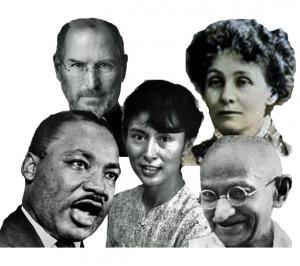Does your fundraising have enough tension?
On the surface, charity seems like a mystery. Why do perfectly sensible people give away their hard-earned money – often sending it off in the mail or the digital ether, never to see it again?
- Written by
- James Read
- Added
- June 02, 2013

I believe one of the most important reasons is tension – the unpleasant, painful contrast between how the world is and how we think it should be. Unfortunately, many nonprofits today are shying away from the tension that energises action. Their brand guides command them to appear hopeful and happy, as if everything is blissfully under control.
This is a mistake.
In order to be successful, your fundraising needs these four building blocks:
1. The vision

It’s part of the human condition – we all believe the world should be better than it actually is. How we envision ‘better’ depends on our upbringing, our emotional makeup, our religious/political beliefs, etc. Your organisation must tap into humanity’s innate desire for a better world.
2. The problem
This is where things get tense. The world is full of problems and they create horrific gaps between what we believe should be and the reality around us. Make sure your nonprofit is clearly focused on a problem and never be ashamed to talk about it.
3. The idea
In order to raise funds, you must also have an idea about how to solve the problem – how to reconcile the painful gaps. You must champion a solution.

4. The team
In order to give, donors must have a sense that a group of caring people, acting together, can implement your idea and make the world better.
These four things together (vision, problem, idea, and team) create a cause – something that people will join, believe in, fight for and support.
But never forget that the energising force for a successful cause is tension. It’s the gnawing agitation we feel because of the problem that blocks our vision for a better world, and the suspense over whether our team can implement its idea to make things right.
So if you want your cause to advance, make sure this tension permeates your brand and your fundraising materials. When you’ve decisively beaten the problem, then your brand guide can tell you to emphasise the positive. Of course, no one will donate to you then – they will have moved on to the next problem.
Does your message present the vision, problem, idea and team to ignite your donors to action?

















